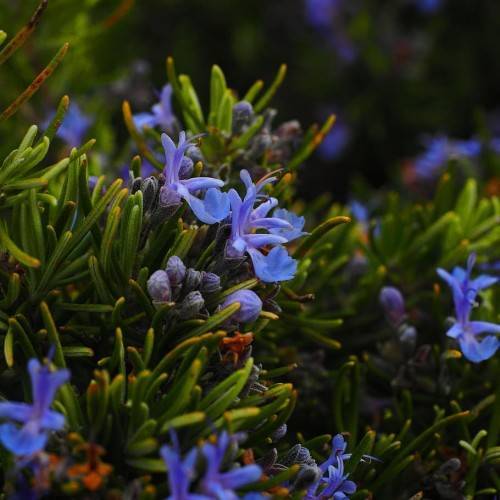
rosemary
Salvia rosmarinus 'Blue Rain'
Cycle:
Perennial
Watering:
Minimum
Hardiness Zone:
8 - 10
Flowers:
Flowers
Sun:
Full sun
Leaf:
Yes
Growth Rate:
Low
Maintenance:
Moderate
Salt Tolerant:
Yes
Care Level:
Medium
watering
Rosemary (Salvia rosmarinus 'Blue Rain') thrive in well-draining, acidic soil, so water lightly and evenly. Water the plant deeply every 10-14 days, so that the soil is thoroughly moist but not soggy. If the soil dries out between watering, spritz the leaves with water to help reduce stress. During the warmer months, water more frequently, up to twice per week. In the winter, water less often, only when the top few inches of soil are dry.
sunlight
Rosemary (Salvia rosmarinus 'Blue Rain') is a perennial herb that prefers full sun. This plant requires at least 6-8 hours of direct sunlight each day and will not do well if planted in too much shade. It is best to place rosemary in an area that receives full sunlight all day, but it can also tolerate partial shade for certain hours of the day. For optimal growth and success, rosemary should be located in an area that receives morning sun and afternoon shade or late afternoon sun and early morning shade.
pruning
Rosemary (Salvia rosmarinus 'Blue Rain') should be pruned about twice annually, once in early spring in late March-April and then again in late summer in August-September. To prune in early spring, cut back the tips of the branches to shape the plant and promote new branches and foliage growth. To prune in late summer, you want to remove any spindly branches, dead wood, and diseased areas in order to keep the plant healthy and shapely. When pruning, be sure to make clean, clear cuts, and avoid pinching, shearing, or leaving jagged ends.
